Tyres are the most important safety feature on your car, carrying its weight and dealing with the forces of accelerating, braking and cornering. The diagram below illustrates the information that’s moulded onto the side of every tyre. You’ll need this when getting a quote for new tyres.
1. Replacing Tyres
Tyres should always be replaced in pairs i.e. a front set or a rear set to avoid any handling or balance problems under braking.
2. Choosing tyres
Always choose the best tyres you can afford. Budget tyres can provide similar grip to premium tyres in the dry, but there is often a much bigger difference in their wet weather performance. It’s especially important to buy tyres that perform well in the wet as it rains an average of 155 days a year.
3. Tyre size
It is a legal requirement that both front tyres are the same size and both rear tyres are the same size. However, the front set can be a different size from the rear set. A wheel will only accept certain tyre sizes and it’s best to stick with the manufacturer’s recommendation. If you do change the size of the wheels, the accuracy of your speedo will be affected (larger wheels will underestimate your speed). Lower profile tyres tend to make the ride more bumpy and increase noise inside the car.
4. Speed rating & load index
The load index and speed rating of a tyre is shown by a letter and a number, for instance 79T. The number refers to the maximum load the tyre can carry and the letter refers to the maximum speed at which it can carry that load.
For example, from the tables below; 90W = 500kg at 270 Kilometers per hour.
From the speed rating table you can see they are all rated in excess of the Kenyan speed limit. However, the speed rating gives an indication of the tyres all round performance and its ability to cope with braking, cornering and accelerating.
Don’t be tempted to go for a lower speed rating than recommended by the car’s manufacturer. You could end up compromising the car’s handling ability and your safety as a result. The Load Index table doesn’t list all possible values but covers most normal road cars. Values are per tyre.
5. Balance
Tyres are never completely evenly weighted and tend to have heavy spots. When the tyres are rotating, these heavy spots can cause vibration through the steering wheel, making the car uncomfortable to drive and causing unnecessary wear to the tyres, suspension and steering. A wheel can be balanced by using a machine to find the heavy spot and a weight added to counteract it. Wheels should always be balanced when the tyres are replaced, but will also need balancing during their lifetime as the tyres wear.

6. UTQG (Uniform Tire Quality Grade)
UTQG is simply a tire quality grading system and it covers three important areas:
- Tread Wear
- Traction
- Temperature
Tread wear
This ratings are usually on a ‘base’ of 100 for wear. A higher number indicates a greater mileage from the tire and a lower number indicates a lower mileage from the tire. You should pick a tread wear based on several things beyond how long a tire will last. For example, if you drive a performance vehicle and drive it hard, you should pick a very soft compound tire and it will usually have a low tread wear number. Conversely, if you have a passenger car that travels long distances at normal speeds, you want a higher tread wear capability. However, there is always a trade off. higher tread wear capabilities usually offer lower handling abilities and in performance tire, a tendency to vulcanize well before their tread has worn down. This creates potentially dangerous situation.
Traction
This is rated either A, B or C; with A being the best case traction and C being acceptable in traction but inferior to both A and B. Traction test are often very misleading as it is, by actual testing, a measure of the tire’s ability to stop in a ” straight ahead” condition, on a wet surface of concrete or asphalt. It has no testing for cornering or acceleration capabilities. One may infer things about the latter but one may be incorrect in these inferences.
Temperature
This is the test of the tire’s ability to withstand heat. Like traction, temperature is rated A, B or C; with A being the best case of a tires’ ability to withstand heat and C being acceptable but inferior to A and B. Heat is a killer of tires and the largest offender is either under inflation of overloading of the tire. Another offender is selecting a tire with an insufficient temperature rating for your specific needs.
7. Production Date
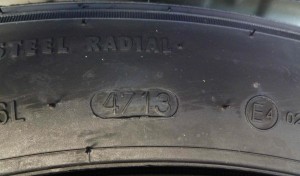
The date your tyres were made will be on the sidewall in the form of four numbers usually preceded by the letters DOT. These numbers represent the week number and year, so 3713 will be week 47, 2013. Use that information to make sure you’re buying tyres with the longest shelf life possible.
8. Alignment
Tracking is the direction the wheels face in relation to each other and should run parallel. Poor tracking can cause a car to pull to one side and is a common cause of premature tyre wear, often visible as one side of the tread being more worn than the other. Driving over pot holes or hitting a wheel on the kerb can cause the tracking to become misaligned. To prolong the life of your tyres, suspension and steering, have your tracking checked every 10,000 miles.
9. Directional Tyres
High performance tyres sometimes have tread patterns which are only designed to rotate in one direction. This generally improves handling and grip but when fitted the wrong way round, aren’t able to clear water effectively and may cause the car to become unstable. If you get a puncture and the spare tyre is directional, you may have no choice but to put it on the wrong side of the car. If you find yourself in this situation, drive carefully and at a reduced speed.
10. Repairs
In some cases a punctured tyre can be repaired rather than replaced but only if the puncture is within the tread area and if it hasn’t been driven too far when flat. Damage to the side wall creates a serious weakness in the tyre and should always be replaced.

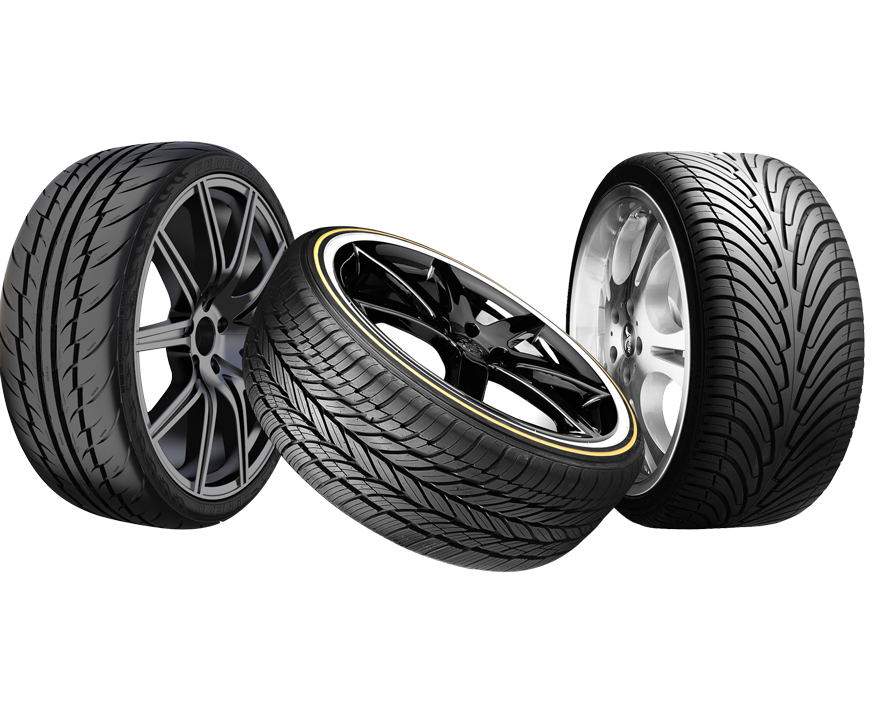

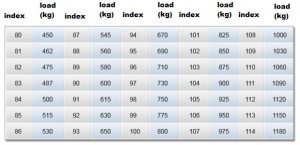
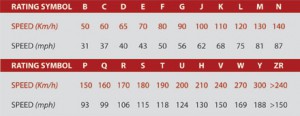
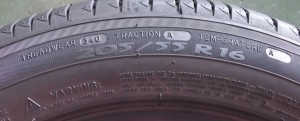

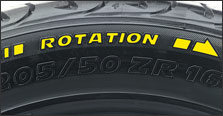
Comments 22
Thanks so much for the article post.Really looking forward to read more. Really Cool.
Aw, this was an extremely good post. Finding the time and actual effort to create a
superb article but what can I say I put things off a lot
and never seem to get nearly anything done.
I will right away grab your rss feed as I can not find your e-mail subscription link or e-newsletter service. Do you’ve any? Kindly let me know in order that I could subscribe. Thanks.
I just want to mention I’m all new to blogs and absolutely liked this web page. Probably I’m going to bookmark your site . You surely come with beneficial article content. Regards for sharing your web site.
Thankfulness to my dad who informed me about this weblog,
this blog is the truth is remarkable.
This is very fascinating, You are an excessively professional blogger. I have joined your rss feed and look ahead to in the hunt for more of your magnificent post. Also, I’ve shared your website in my social networks!
Yeah bookmaking this wasn’t a high risk conclusion outstanding post! .
Sweet site, super design and style, very clean and employ pleasant.
Author
Thanks
I really like what you guys are up too. This type of clever work and coverage! Keep up the terrific works guys I’ve you guys to blogroll.
Loving the information on this web site, you have done great job on the posts.
I need to to be grateful for this wonderful read!!
I definitely loved every tiny amount of it. I’ve got you saved being a favorite to look
at new stuff you post
I have been surfing online greater than 3 hours today, but I never discovered any fascinating article like yours. It is pretty value sufficient for me. In my view, if all web owners and bloggers made just right content as you did, the web can be a lot more helpful than ever before.
Author
thanks
Merely wanna comment on few general things, The website style and design is perfect, the content material is very wonderful : D.
This is the perfect site for anybody who
hopes to find out about this topic. You understand so much its almost tough to argue with you (not that I really will need toHaHa).
You definitely put a fresh spin on a subject that’s been written about for a long time.
Great stuff, just wonderful!
Author
Thanks for the support
My relatives all the time say that I am just wasting my time here
at web, except I know I am getting familiarity every day
by reading thes good articles.
“Im grateful for the blog post.Really thank you! Much obliged.”
I quite like reading through a post that can make people think.
Also, many thanks for permitting me to comment!
Im obliged for the post.Thanks Again. Great. Christianson
Howdy very nice site!! Guy .. Beautiful .. Amazing .. I will bookmark your web site and take the feeds additionallyKI’m glad to seek out a lot of helpful info here in the publish, we want work out more techniques in this regard, thank you for sharing. . . . . .